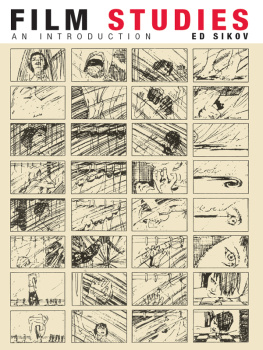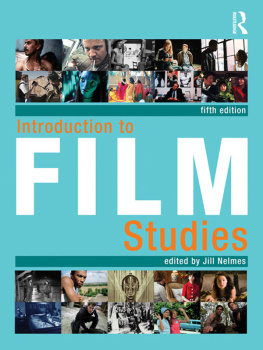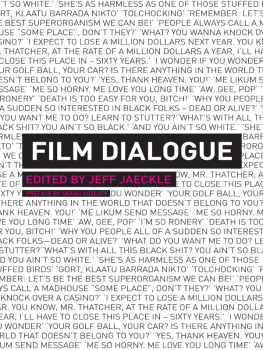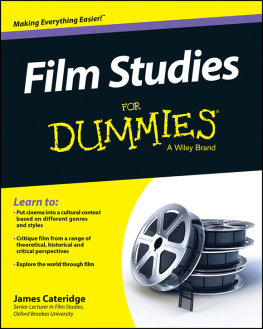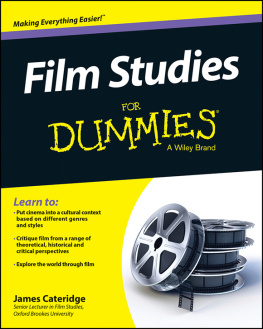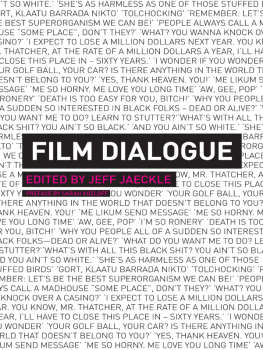Ed Sikov - Film Studies
Here you can read online Ed Sikov - Film Studies full text of the book (entire story) in english for free. Download pdf and epub, get meaning, cover and reviews about this ebook. publisher: Columbia University Press, genre: Romance novel. Description of the work, (preface) as well as reviews are available. Best literature library LitArk.com created for fans of good reading and offers a wide selection of genres:
Romance novel
Science fiction
Adventure
Detective
Science
History
Home and family
Prose
Art
Politics
Computer
Non-fiction
Religion
Business
Children
Humor
Choose a favorite category and find really read worthwhile books. Enjoy immersion in the world of imagination, feel the emotions of the characters or learn something new for yourself, make an fascinating discovery.

- Book:Film Studies
- Author:
- Publisher:Columbia University Press
- Genre:
- Rating:3 / 5
- Favourites:Add to favourites
- Your mark:
- 60
- 1
- 2
- 3
- 4
- 5
Film Studies: summary, description and annotation
We offer to read an annotation, description, summary or preface (depends on what the author of the book "Film Studies" wrote himself). If you haven't found the necessary information about the book — write in the comments, we will try to find it.
Film Studies — read online for free the complete book (whole text) full work
Below is the text of the book, divided by pages. System saving the place of the last page read, allows you to conveniently read the book "Film Studies" online for free, without having to search again every time where you left off. Put a bookmark, and you can go to the page where you finished reading at any time.
Font size:
Interval:
Bookmark:
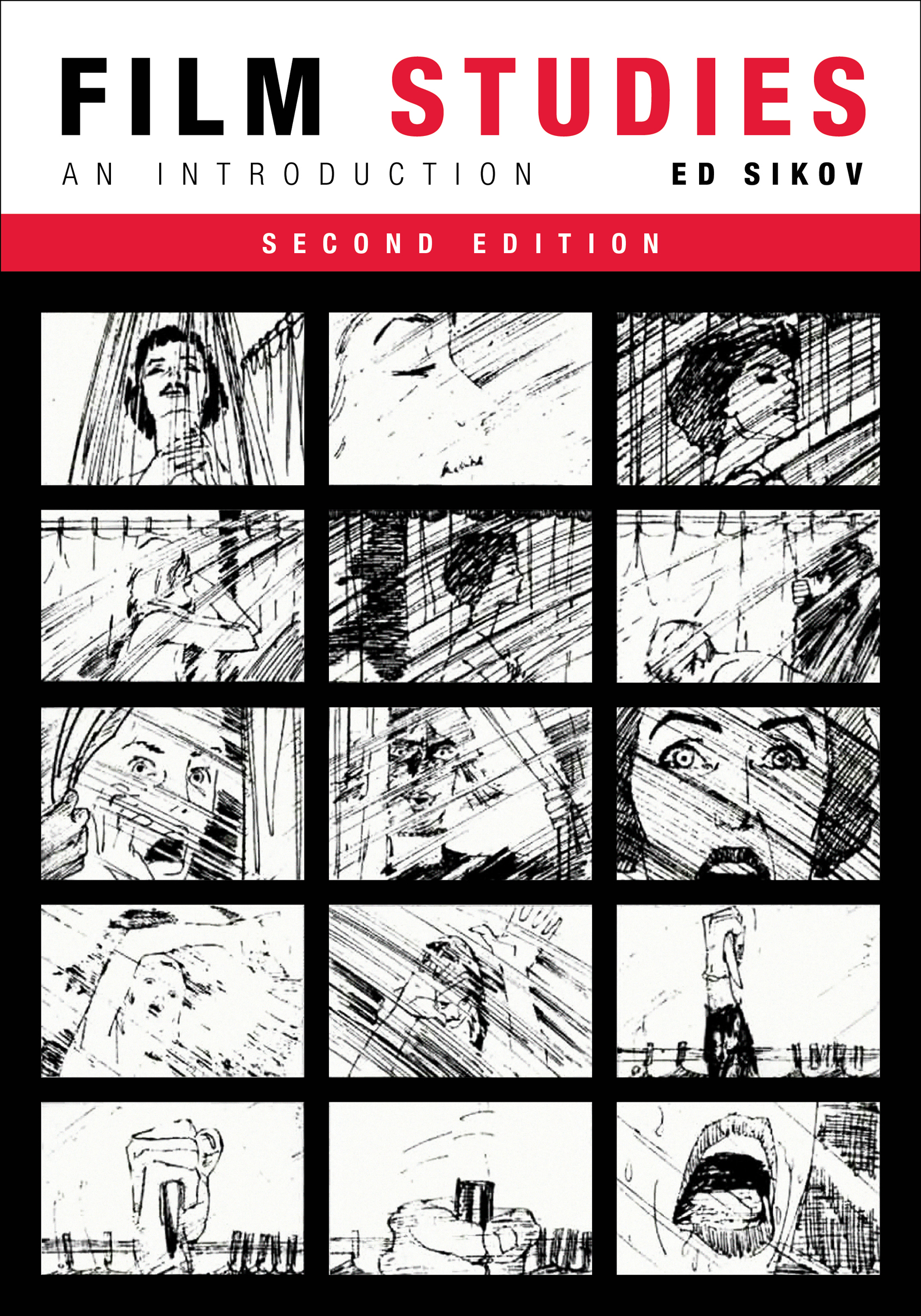
Film Studies
Film and Culture Series
FILM AND CULTURE
A SERIES OF COLUMBIA UNIVERSITY PRESS
Edited by John Belton
For a complete list of titles, see
FILM STUDIES
An Introduction
Ed Sikov
Second Edition
COLUMBIA UNIVERSITY PRESS NEW YORK
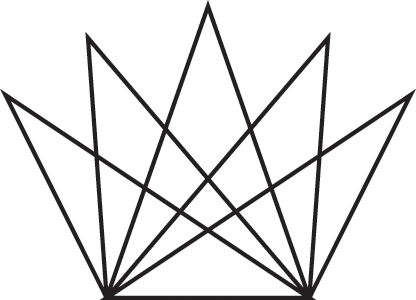
COLUMBIA UNIVERSITY PRESS
Publishers Since 1893
NEW YORK CHICHESTER, WEST SUSSEX
cup.columbia.edu
Copyright 2020 Ed Sikov
All rights reserved
E-ISBN 978-0-231-55156-4
The author and Columbia University Press gratefully acknowledge permission to quote material from John Belton, American Cinema/American Culture, 3rd ed. (New York: McGraw-Hill, 2008); copyright 2008 McGraw-Hill Companies Inc.
Library of Congress Cataloging-in-Publication Data
Names: Sikov, Ed, author.
Title: Film studies : an introduction / Ed Sikov.
Description: Second edition. | New York : Columbia University Press, [2020] | Series: Film and culture series | Includes index.
Identifiers: LCCN 2020001950 (print) | LCCN 2020001951 (ebook) | ISBN 9780231195928 (cloth) | ISBN 9780231195935 (paperback)
Subjects: LCSH: Motion pictures.
Classification: LCC PN1994 .S535 2020 (print) | LCC PN1994 (ebook) | DDC 791.43dc23
LC record available at https://lccn.loc.gov/2020001950
LC ebook record available at https://lccn.loc.gov/2020001951
A Columbia University Press E-book.
CUP would be pleased to hear about your reading experience with this e-book at .
Cover images: TCD / Prod.DB / Alamy Stock Photo
and the other great students in my life
forJohn Belton
and the other great teachers in my life
WHAT THIS BOOK ISAND WHAT ITS NOT
This book is designed to provide a basic introduction to the academic discipline known as film studies. It covers, in the first eleven chapters, the fundamental elements of formal film analysis, from the expressive content of individual images to the ways in which images link with one another; from the structures of narrative screenplays to the basics of cinematography, special effects, and sound. The books final chapter is a step-by-step guide to writing a final paper for the kind of course for which this textbook has been written.
Film Studies is a primera pared-down introduction to the field. It is aimed at beginners. It simplifies things, which is to say that the information it contains is straightforward and aimed at every student who is willing to learn it. Its complicated material, but only to a point. The goal here is not to ask and answer every question, cover every issue and term, and point out the exceptions that accompany every rule. Instead, Film Studies tries to cover the subject of narrative cinema accurately but broadly, precisely but not comprehensively. It is a relatively short book, not a doorstop or makeshift dumbbell. It isnt meant to cover anything more than the basic elements of formal film studies.
This book is about feature-length narrative cinemamovies that tell fictional stories that last from about ninety minutes to three or three and a half hours. It does not cover documentaries, which are about real people and events. Its not that documentary filmmaking is not worth studying; on the contrary. Its just that Film Studies is strictly an introduction to narrative cinema. Similarly, there is nothing in Film Studies about avant-garde filmsthose motion pictures that are radically experimental and noncommercial in nature. Film history is full of great avant-garde works, but that mode of filmmaking is not what this book is about.
People who study movies think about them in different and divergent ways. Scholars have explored sociological issues (race, ethnicity, religion, and class as depicted in films) and psychological issues (how movies express otherwise hidden ideas about gender and sexuality, for instance, or how audiences respond to comedies as opposed to horror films), to cite only a few of the various lenses through which we can view films. Researchers can devote themselves entirely to the study of film historythe nuts-and-bolts names, dates, and ideas of technological and aesthetic innovation that occurred on a global level. Similarly, the study of individual national cinemas has provided critical audiences with a broad range of cinematic styles to pursue, pinpoint, and enjoy.
Film Studies is not about any of these subjects. It is, to repeat, a primer, not an exhaustive examination of film interpretation, though the book has been expressly designed to accompany as wide a variety of film courses as possible.
This book centers on aspects of film form. You will learn the critical and technical language of the cinema and the ways in which formal devices work to create expressive meaning. Hopefully, if you go on to study film from a psychological or sociological perspective, or explore a particular national cinema, or take an upper-level film course of any kind, you will use the knowledge you gain here to go that much deeper into the films you see and study. This book serves as a first step. If this turns out to be your only exposure to film studies, you will still be able to bring to bear what you learn here to any film you ever see in the future.
Most film textbooks are awash in titles, names, and dates, and Film Studies is in certain ways no differentexcept in degree. In order to illustrate various points with examples, Film Studies does refer to a number of real movies that were made by important filmmakers at specific times in the course of film history. But in my experience, introductory students, when faced with the title and even the briefest description of a film they have never seen (and most likely will never see), tend to tune out. As a result, I draw a number of examples in Film Studies from hypothetical films; I will ask you to use your own imagination rather than draw impossibly on knowledge you dont already have about films you havent seen. Moreover, each individual film class has its own screening list. Indeed, from a professors perspective, one of the great pleasures of teaching cinema studies classes lies in picking the films to show and discuss. Film Studies tries not to get in the way of individual professors tastes. In short, this book does not come with its own prearranged list of films you must see.
Some film studies textbooks contain hundreds of illustrationsfilm stills, drawings, graphs, and frame enlargements, many of which are in color. Film Studies does offer illustrations when necessary, but in order to keep the book affordable, they are not a prominent feature.
In fact, Film Studies tries to be as practical and useful as possible in many ways. It aims for the widest readership and is pitched accordingly. It draws most of its examples from American films because they are the films that most American students have seen in the past and are likely to see in the future. It is designed to accompany a wide spectrum of film courses but is focused most clearly on the type of mainstream Introduction to Film class that is taught in practically every college and university in the United States and Canada.
Font size:
Interval:
Bookmark:
Similar books «Film Studies»
Look at similar books to Film Studies. We have selected literature similar in name and meaning in the hope of providing readers with more options to find new, interesting, not yet read works.
Discussion, reviews of the book Film Studies and just readers' own opinions. Leave your comments, write what you think about the work, its meaning or the main characters. Specify what exactly you liked and what you didn't like, and why you think so.


